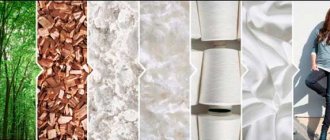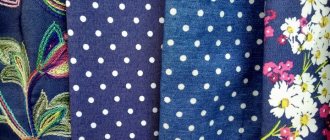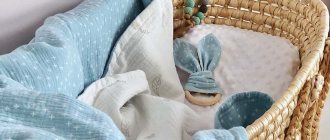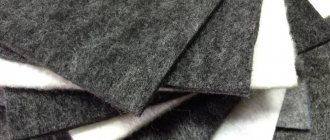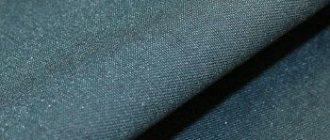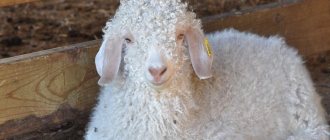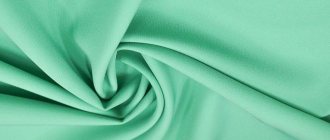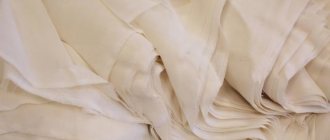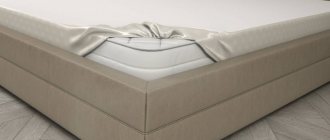Sintepon insulation enjoys well-deserved popularity among non-woven materials; it is widely used in the manufacture of various products. This word is a general term for materials with different properties. Many consumers have developed a biased attitude towards the material after purchasing an item with low consumer characteristics. This is explained by the fact that a number of manufacturers use low-quality cheap raw materials in the technical process. But there are companies that value their reputation; their product is modern, useful and reliable. Let's consider the main advantages and disadvantages of padding polyester, its composition, properties and scope of use.
Origin story
The first study of the processing of thermoplastic into insulation fibers began in 1935. This was in Great Britain, and in the Soviet Union, synthetic winterizer was created in 1949. Then it was called lavsan from the abbreviation of the name of the Laboratory of Macromolecular Compounds of the Academy of Sciences.
Then the technology continued to advance around the world and be improved by scientists from different countries. In 1960, Japan invented bonding fibers using the temperature method. This is an improvement that made it possible to create large padding polyester fabrics, where the fibers adhere better to each other.
Thanks to the Italians, the material became widespread; clothing, stuffing for toys, and bedding began to be made from it. It is impossible to imagine a world without this light, but warm and dense material, it surrounds us.
What is it made from, composition
The name “sintepon” is formed by merging the words “synthetic fabric”. It is made from a material belonging to the category of plastic - polyester, and specifically from polyethylene terephthalate. Chemical origin classifies the material as synthetic. But despite this, the polyester composition is safe for humans.
Interesting fact: making padding polyester has a positive effect on the environment. There are 2 types of raw materials that can be used to produce filler - primary and secondary. Primary is pure plastic that has not yet been used, but secondary raw materials are bottles, disposable tableware and other PET waste that litter our planet. The production of padding polyester allows them to be given a second life and used again for the benefit of people.
Filling made from recycled materials is not used for the production of clothing or pillows, because at the moment technology does not make it safe for humans. Perhaps over time this will become possible, but for now it is used only in the technical field.
Characteristics by properties
The synthetic winterizer has a width from one and a half to 2.35 meters and a thickness depending on its purpose. When sewing a thin bedspread, only 0.5-1 cm can be used, but for furniture seats the thickness can be 5 cm or more.
Expert opinion
Alyona
Fabric expert and technologist Alena Khlebnikova is ready to answer your questions.
Write to us
Manufacturers also call this material polyester. For example, the label of a jacket with padding polyester insulation may say “polyester.” These are not the same concepts; polyester is a group of materials that are made from polyester, but padding polyester is only one of them.
The padding polyester looks like white fibers intertwined with each other. It can be described in a few words - it is a voluminous fluffy cloud that can be easily squeezed in your hands. Available in white, but can be grayish or yellowish.
Comparison of fillers, how to distinguish them by touch
As a rule, high-quality synthetic padding has light shades: from white to milky. When you press the fabric with your finger, a small dent will instantly appear, after which the material will immediately return to its original shape. Synthetic winterizer is much lighter than wool insulation.
How to distinguish padding polyester from its holofiber variety
Holofiber is an elastic synthetic insulation. It is hollow inside, so it retains heat well. Holofiber, unlike lower-quality types of padding polyester, retains its original shape after a dozen washes and is able to warm you up in a frosty winter. In addition, it does not cause allergies, compared to synthetic filler. Holofiber has practically no color shades. It is usually light and shiny in color. In the light this material is slightly transparent. Other types of padding polyester are stiffer and looser than holofiber. If the holofiber is wrinkled in your hand, it begins to slide. It, like padding polyester, can stretch almost silently.
Holofiber has good sound insulation. Its use in the construction industry helps create favorable conditions for people, providing maximum acoustic comfort in the classroom.
Sintepon (top) and holofiber (bottom)
How to distinguish padding polyester from fluff
Synthetic winterizer is a synthetic insulation material, while down is a natural insulation material and lasts longer. Synthetic winterizer cannot be considered a durable material. Down is much lighter and warmer than padding polyester. Items made from padding polyester are easy to care for. If the down is of poor quality, then in rainy weather it can roll up and “fall out” down.
Down is a natural insulation material and lasts longer than padding polyester.
To distinguish padding polyester from down, you can do a little checking. Hold a piece of the product between your fingers and rub it. The fluff will quickly disperse, but after shaking it will return to its place. The fibers that make up the padding polyester feel rough, as if they squeak between your fingers. We can come to the conclusion that padding polyester, unlike down, is unable to compress much.
It should be noted that items made from padding polyester have the lowest cost compared to down or holofiber.
How does Thinsulate differ from padding polyester?
This material was invented in the 70s of the last century in the USA; today it is also produced in Germany, China and Taiwan. The name comes from the English words thin - thin and insulation - insulation.
Thinsulate consists of many fibers with a diameter of 2–6 microns, which is 50–70 times thinner than a human hair. The threads are woven together and are additionally subjected to thermal gluing. The material turns out to be very light and airy, since the volume of air in it is greater than the volume of fibers, which provides excellent thermal protection.
Despite the similar characteristics of Thinsulate and Holofiber, they have one significant difference - price. Thinsulate allows you to sew outerwear with a tight-fitting silhouette, but it will be 3–5 times more expensive than a similar product with holofiber.
Thinsulate is inferior to holofiber in terms of efficiency, but superior to it in consumer properties
Pros and cons as insulation
Among the positive properties of synthetic winterizer:
- Soft and voluminous. Furniture seats are made from padding polyester, which are very comfortable and soft to sit on. It is also actively used to fill soft toys.
- Easy. Even a double blanket filled with padding polyester will not press on top (like, for example, an old cotton blanket). A coat insulated with padding polyester is much lighter than a down jacket.
- Elastic, recovers quickly. After the fibers are compressed, they immediately return to their original state.
- Thermal insulation. You won't feel cold in clothes lined with padding polyester.
- Hypoallergenic. Despite its artificial origin, allergy sufferers do not complain about this material. As well as warm children's clothing and toys are filled with padding polyester.
- Long lasting. Even after several years of use, it does not wrinkle. Of course, subject to the conditions of use and care.
Unfortunately, this fiber is not without its disadvantages:
- Sintepon is not intended for harsh winters. At temperatures below -10 degrees it can be cold.
- Despite the porous structure, it does not allow much air to pass through. This may cause a person to sweat.
- An allergy may occur if low-quality glue was used during production (when manufactured using the glue method).
Manufacturing technologies
- Sintepon is made from thin threads in several ways. The most common and modern method, which is very popular, is heat treatment of fibers. The threads are slightly melted and fastened together. This material is called Eurosintepon. It is soft and elastic to the touch, retains its shape well and is less electrified. Eurosintepon is used in the manufacture of pillows and blankets, as well as for insulating outerwear. The color is white, the fibers are slightly transparent.
- The second most common method for making padding polyester is based on the fact that the fibers are held together using a special glue. The resulting material is the cheapest among others. It quickly falls off, becomes deformed and becomes highly electrified, but feels more delicate and airy to the touch than Euro synthetic winterizer. This type of material is used in the manufacture of decorative pillows and children's toys. The color is white, there may be subtle grayish tints.
- And the last method is to connect the threads using needles that have miniature notches. Bonding is carried out using special equipment. The resulting material is of higher quality than Euro synthetic winterizer. It is more resistant to mechanical stress and lasts longer. It is used in the production of clothing, bedding and furniture decorative items. The color is white, and when crumpled, it quickly returns to shape. To the touch, such padding polyester is soft, smooth and elastic, has a porous but uniform structure.
Difference from holofiber
In another way, holofiber is also called siliconized padding polyester, but this is a slightly different material, although it is also used as a filler.
A characteristic feature of difference is shine. If you take a piece of padding polyester and holofiber in both hands, the second one will be softer and looser, as if in lumps. These fluffy balls are filled with soft toys.
It is also possible to divide padding polyester into layers, since it is produced in sheets. Holofiber is round in shape, and this will not work with it. Therefore, if you are sewing, for example, a quilt, it is better to use padding polyester.
Types of material and features of its application
If the padding polyester contains a natural component - sheep wool, it is called sherstepon. Its properties and characteristics are the same as those of ordinary canvas. The presence of sheep wool improves environmental friendliness and heat resistance. Fabric with padding polyester of this type is most often used for sewing blankets.
The stitching of mattress covers and bedspreads is carried out using padding polyester fabric, which contains cotton fibers.
Sinteplast is a thermally bonded bulk material. It contains silicone in large quantities. Due to its high level of elasticity, the fabric is used in the manufacture of mattress covers, blankets and as a lining for upholstered furniture.
Synthetic fluff, better known as holofiber, also has a significant portion of silicone in its structure. It can be in the form of slabs, sheets or balls. This fabric is more high-tech, therefore it is in high consumer demand.
Sintepon is used for sewing various products. It is unthinkable to imagine modern life without this material: it is present in pillows, blankets, mattresses, and bedspreads. Quilted fabric with synthetic padding is used for sewing outerwear: jackets, down jackets, coats for adults and children. There is even aquarium synthetic polyester used in filters.
The furniture industry is one of the largest consumers of padding polyester fabric. The padding polyester filler is used as a lining for the fabric, giving the product shape and softness.
Due to its harmlessness to human health, synthetic padding is actively used for the production of toys and children's goods.
Stitching on padding polyester is present in children's blankets and clothes.
Kinds
To choose the right material, you need to know what types of padding polyester are available. According to the production method there are 3 varieties:
- Thermal. The fibers bond together when exposed to high temperatures. Polyester can melt when heated, so some of the hairs stick together and form a layer. This type is more wear-resistant because no glue or other substances are used, therefore, the fibers are more tightly bonded to each other.
- Glue. This is the cheapest padding polyester presented. The fibers in it are combined using special adhesive emulsions, usually PVA. It is not dangerous to humans and does not cause allergies or any consequences, but only if the manufacturer has taken care of high-quality raw materials. Unfortunately, to reduce costs, various harmful impurities can be added to the glue. In general, adhesive padding polyester cannot be called high quality, because the glue from the fibers is washed out after some time.
- Needle-punched. The hairs are connected to each other on a special machine with needles that bend the fibers in different directions. Due to this, they are securely fastened to each other, this is the highest quality method of all presented.
Composition and properties of synthetic winterizer
The material mainly consists of polyester fibers. Sometimes natural additives are used - wool or cotton. The canvas consists of several parallel layers, the density of which can vary in the range of 0.04 - 1.5 kg per cubic meter. The thickness of the canvas directly depends on the purpose. Recently, it has become possible to produce filler with multidirectional fibers - this method significantly improves the quality of padding polyester.
There are three main production methods:
- Needle-punched method. Due to the fastening with needles that intensively intertwine the fibers, the result is a high-quality, dense product. This insulation is slightly susceptible to deformation and can withstand washing and dry cleaning.
- Gluing method. The most cost-effective production method. The individual layers of material are connected with special glue. However, the fabric obtained by gluing is deformed when washed and is destroyed at temperatures above 40 degrees.
- Thermal bonding method. The thermal production method involves exposing the fibers to high temperatures, a certain amount of which melts and acts as an adhesive base for the remaining components. Thanks to thermal bonding, the highest quality padding polyester is obtained, which is much lighter than its analogues and is not subject to destruction due to washing and folding.
Additional types of material are obtained as a result of special technical processes and the use of additives:
- synthetic plastic is a very elastic material, obtained by adding silicone to the composition;
- sherstepon - has this name due to the addition of sheep wool to synthetics;
- holofiber - silicone fibers are added for its production;
- synthetic fluff - obtained by twisting polyester fibers into a spiral.
Characteristic properties:
- ease;
- does not absorb liquid;
- not subject to deformation (subject to the permissible temperature conditions);
- low melting point;
- non-toxic;
- high level of thermal insulation.
Application of filler
Used as a filler for bedding items - blankets, pillows. This is a universal material that is easier to clean and wash than other fillers, and also retains its fluffiness and volume longer, which is why it is so widespread in production.
And also this insulation, which allows you to sew warm, but at the same time light winter clothes. Thanks to the types of density and width, it can be used in demi-season and warm jackets and coats.
Dense and thick padding polyester is used to make layers for furniture seats. This allows you to reduce the cost of goods, as well as extend the life of sofas, armchairs and mattresses.
Soft padding polyester and holofiber are used by needlewomen to fill soft toys. Holofiber is more suitable for these purposes, because it comes in crumbly balls, but if desired, you can also use synthetic padding. If it is collected in sheets, then it can be divided, fluffed and filled inside the toy.
How to sew padding polyester?
The answer to this question depends on what you are sewing, i.e. In what capacity is synthetic winterizer used?
When it comes to clothing insulation, there are two options:
- The top material is quilted on a sewing machine along with padding polyester. Jackets, coats, and insulated trousers are made in this way.
- An insulating lining is made - synthetic winterizer is quilted with lining fabric. This method is used in the manufacture of coats from woolen fabrics, fur coats, and insulated pants, in which the model does not require stitching on visible parts.
When making blankets and bedspreads, padding polyester is quilted with the base material using decorative stitching.
You can buy synthetic winterizer insulation in the VELVET online store by placing an order on our website.
Density of padding polyester in jackets by temperature
The density of padding polyester can be in the range of 50-400 g m². Depending on whether you are sewing a warm coat or a vest, you should know what degree and what density it is designed for. All these parameters are specified by GOST standards.
- 50 g m² is a very thin padding polyester that definitely won’t be able to warm you up. It is used rather to compact the material.
- 80 g m² - suitable for +10 C°.
- 100 g m² - for cool temperatures from zero to 5 degrees Celsius.
- 150 g m² - jacket for frost down to -5 C°.
- 200 g m² - winter temperature about -10 C°.
- 300-400 g m² - rarely used, you can stay in them at temperatures down to -20-25 degrees, but not everyone will be comfortable with this, because synthetic winterizer does not retain heat well and is blown by the wind.
Recommendations for caring for products with padding polyester
If there is a need to wash a synthetic winterizer product, you need to know how to do it correctly so as not to knock off the filling and not spoil the appearance of the item.
- They use not only hand washing, but also automatic washing on a delicate cycle.
- Set the minimum temperature (30 degrees).
- Do not fill the machine drum more than two-thirds full. It will be better if the product fills only half. The fact is that when wet, it will increase its size and weight; the washing machine may simply not withstand such a load and break.
- It is advisable to avoid spinning and drying, so as not to end up with wrinkled fabric and crumpled filler.
- Do not soak the item in advance.
- The detergent must be liquid, suitable for synthetic fabrics. Do not use powder or chlorine-containing substances, as they will damage the structure.
- To wash out the detergent, it is better to include an additional rinse.
- If the product is still wrinkled, you can iron it through a thick flap at the minimum temperature. Steaming is prohibited!
- Spinning is not necessary even with your hands; the water will drain from the jacket or coat itself if you hang it over a basin on a hanger.
What to do if the padding polyester goes wrong
Despite all the positive features, it is still a clumping material, which causes inconvenience during use. If the problem occurs after washing, you can wash the item again, but using shady balls. There is no need to add detergent; all other washing recommendations remain the same. Straighten the remaining lumps with your hands.
If it is possible to remove the filler (for example, from a pillow), then it can be combed by hand. To do this, remove the clumps and ruffle them using a pet detangling brush. If you don’t have a brush, you can do this with your hands, “tearing” the fibers to create a fluffy mass. At the end of the procedure, place the filler inside the cover and sew up the hole.
Thermal method
This method involves gluing the fibers of the fabric when exposed to high temperatures. The connecting link is polyester fiber, which has a fusible coating - some of the fibers melt and thus stick together. A product made from such padding polyester will be more resistant to wear, and after washing you will receive it in its original form. It is characterized by such qualities as amazing heat-shielding properties and low weight. This synthetic winterizer has another name - Euro synthetic winterizer.
